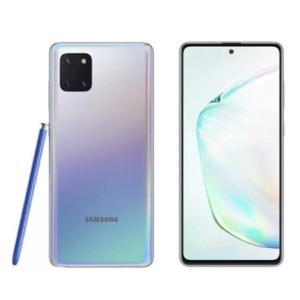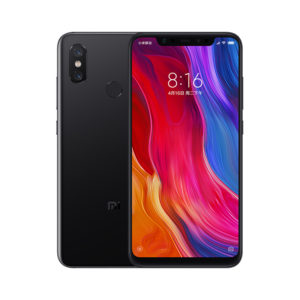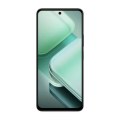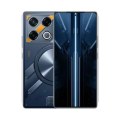Samsung Galaxy S10 Lite vs Xiaomi Mi 8
Even months after hitting the store shelves, the Xiaomi Mi 8 continues to garner popularity among smartphone lovers.
The hotly-anticipated Galaxy S10 Lite from Samsung is expected to sweep Samsung fans off their feet when it launches later this month.
Here’s a comparison between the Samsung Galaxy S10 Lite and the Mi 8 smartphones on the basis of their appearance, design, hardware, and performance.
Appearance & Design
The glossy design of the Galaxy S10 Lite is augmented further with a 5.8-inches Super AMOLED, QHD+ display having a high resolution of 2960 x 1440 pixels and an aspect ratio of 18.5:9.
It has an always on-screen which is scratch resistant; however, there’s Gorilla Glass 6 on top to provide additional protection.
On the back, you’d find a 12MP+12MP (telephoto) dual camera setup with dual-LED flash and AF. Another 8.0MP camera with an f/1.7 aperture is placed on the front for selfies and video chatting.
You can choose between four color options including black, blue, green and white.
The Xiaomi Mi 8 is housed in a sturdy aluminum alloy and metal frame. It sports an extra large 6.21 inches AMOLED FHD+ display with a screen resolution of 1080 x 2248 pixels and a pixel density of 402PPI.
It features a 2.5D curved glass screen which is Scratch resistant and has Corning Gorilla Glass on top.
The phone’s dimensions are 74.8 mm x 154.9 mm x 7.6 mm and it weighs in at only 175g. There are four color versions of the Mi 8 including white, black, blue and gold available in the market.
The back area of the Mi 8 feature cameras comprising two 16.0MP and 16.0MP sensors with dual-LED and AF. Up front, there’s a 20.0MP front shooter for self-portraits and face-to-face video chatting.
Hardware & Performance
The Galaxy S10 Lite will be powered by Exynos 9820 Octa or Qualcomm SDM855 Snapdragon 855, 64-bit processor. Moreover, it will feature a Mali-G76 MP12 or an Adreno 640 graphics processing unit, under the hood.
The phone will come with 6GB of LPDDR4X RAM and is expected to offer 128GB of expandable (up to 512GB via microSD card) onboard storage capacity.
The S10 Lite will be backed by a 3,000 mAh Lithium-ion battery that supports wireless charging and fast charging. The phone will run One UI based on Android 9.0 Pie OS.
In terms of sensors, the Galaxy S10 Lite will feature the proximity, light, accelerometer, compass, gyroscope, fingerprint, barometer, heart rate and SpO2.
The Xiaomi Mi 8 smartphone packs Qualcomm Snapdragon 845, 64-Bit processor and a highly competent Qualcomm Adreno 630 GPU for a superior viewing and casual gaming experience.
The phone comes with 6GB of LPDDR4x RAM and offers three storage options including 64GB/128GB/256GB. On the downside, the Mi 8 does not support external card expansion.
The Xiaomi Mi 8 does not feature card slots. The phone draws its juices from a non-removable 3,400 mAh Lithium-Polymer battery that delivers up to 330 hours of standby time and about 14 hours of talk time.
It runs MIUI V10 based on Android 8.1 Oreo OS. Aside from a rear-mounted ultrasonic fingerprint scanner, the Mi 8 features a slew of other useful sensors like the accelerometer, gyroscope, proximity, compass, barometer, Hall, step detector and step counter.
Price
Despite the lack of an official confirmation, multiple reports suggest that the Galaxy S10 Lite will come bearing an $852 price tag.
The Xiaomi Mi 8 smartphone retails for 380 EUR, which roughly converts to about $431. You can find a more detailed comparison between the two phones below:
-
Product Name
-
Product Image
-
Price
-
Our Rating
-
Brand
-
Category
General
-


-
ModelSamsung Galaxy S10 Lite Xiaomi Mi 8
-
ReleasedJanuary, 2020 07 June, 2018
-
StatusAvailable Available
Design
-


-
Type Design Type called form factor refers to a mobile phone's size, shape, and style as well as the layout and position of major components of phone. There are three major form factors seen in mobile phones => bar phones, folding phones and sliding phones.Bar Bar
-
Dimensions162.5 x 75.6 x 8.1 mm 70.2 mm x 158.0 mm x 8.1 mm
-
Weight186 Grams 150 Grams (with Battery)
-
WaterproofNo No
Display
-


-
Display Type Display Technology => A number of display technologies and types used in mobile phones => TFT (Thin Film Transistor), IPS (In-Place Switching), OLED (Organic Light Emitting Diode), AMOLED (Active-Matrix Organic Light-Emitting Diode), Super AMOLED (an even advanced version of AMOLED), Resistive Touchscreen (Resistive touchscreens contain two layer of conductive material with a very small gap between them which acts as a resistance), Capacitive Touchsceen (Capacitive touchscreen technology consists of a layer of glass coated with a transparent conductor)Super AMOLED Plus OLED capacitive touchscreen
-
Size6.7 inches 6.01 inches FHD+
-
Resolution1080 x 2400 pixels 2160 x 1080 Pixels, 24 bit color depth
-
Display Colors Display Colors is refers to the number of different shades of colors that the screen is capable of displaying => 64K colors, 256K colors and 16 million colors, Obviously 16M is highest available range of colors and better than others.16M Colors 16M Colors
-
Pixel Density Pixel Density (PPI) is refers to the concentration of pixels on a particular display, measured in pixels per inch (ppi). Pixel density is calculated by dividing the diagonal pixel resolution of a display by its diagonal size, higher pixel density better display quality.~394 PPI Pixel Per Inch ~ 402 PPI Pixel Per Inch
-
Touch ScreenCapacitive touchscreen Yes Multi Touch Support
-
Display Protection Display Protection => Gorilla Glass is a special alkali-aluminosilicate glass shield with exceptional damage resistance that helps protect mobile displays from scratches, drops, and bumps of everyday use, It is always better to go for a smartphone with Gorilla Glass for that added protection and peace of mind.Yes Corning Gorilla Glass
-
FeaturesAlways-on display
HDR OLED FHD+ display
~ 402 PPI Pixel Density
2.5D curved glass screen
Capacitive
Color LED Notifications
Corning Gorilla Glass
Frameless
HDR
Multi-touch
Scratch resistant
Always-On Displa
Hardware
-


-
CPU The main chipset of the device.Octa-core (1x2.84 GHz Kryo 485 + 3x2.42 GHz Kryo 485 + 4x1.78 GHz Kryo 485) Octa Core 4 x 2.8GHz Kryo 385 + 4 x 1.8GHz Kryo 385 CPU Clock
-
GPU GPU (Graphics Processing Unit) is a single-chip processor designed to rapidly manipulate and alter memory to accelerate the creation of images in a frame buffer intended for output to a display, This includes things such as lighting effects, object transformations, and 3D motion.Adreno 640 Qualcomm Adreno 630 GPU
-
RAM (Memory) RAM (Random Access Memory) is a type of computer memory that can be accessed randomly, any byte of memory can be accessed without touching the preceding bytes that allows information to be stored and accessed quickly from random locations. RAM is the most common type of memory found in computer systems, smartphones, tablets and other electronic devices.6 GB, 8 GB 6GB
-
Internal Storage Internal Storage is a data storage space (flash memory) mostly used in smartphones, tablets and other electronic devices where operating system, apps, music, photos, videos, files and other user data Is stored.128 GB 64GB
-
Memory Card Slot Memory Card Slot is a special slot for inserting a memory card. Memory cards allow you to expand the phone's built-in memory, A memory card (sometimes called a flash memory card or a storage card) is a small storage medium used to store data such as text, pictures, audio, and video, for use on small, portable or remote computing devices such as mobile phones, mp3 players, digital cameras.microSD, up to 1 TB External Card Not Supported
-
Sensors Sensors are electronic components that detects and responds to some type of input from the physical environment. The specific input could be light, heat, motion, moisture, pressure and location, The output is generally a signal that is converted to use in computing systems, a location sensor, such as a GPS receiver is able to detect current location of your electronic device.Fingerprint (under display, optical), accelerometer, gyro, proximity, compass
Samsung DeX (desktop experience support)
ANT+ Fingerprint (rear-mounted), accelerometer, gyroscope, proximity, compass, barometer, Light, Hall
Software
-


-
Operating System OS => Every computer system run on a base software called Operating System (OS). Operating System controls all basic operations of the computer (such as smartphone, PDAs, tablet computers and other handheld devices). The Operating System allows the user to install and run third party applications (apps), apps are used to add new functionality to the device.Android 10.0 + One UI 2 Android 8.0 Oreo with MIUI V9
-
User Interface UI or user interface of a device is the look and feel of the on-screen menu system. How it works, its color scheme, how it responds to button presses, all of these things are part of the user interface.Yes Yes with Modified Android
Camera
-


-
Rear Camera Camera is able to capture photographs and usually videos, The most important characteristics of a camera are the resolution (measured in megapixels), lens focus type (fixed or automatic), higher megapixel cameras are known to capture higher quality photos, but not always a good measurement of the photos quality.48 MP (wide) + 12 MP (ultrawide) + 5 MP dedicated macro camera 16 Megapixels + 16 Megapixels (Dual Rear Camera)
-
Image2160p 4608 x 3456 Pixels
-
Video2160p@30fps, 1080p@30/60fps (gyro-EIS), 720p@960fps 2160p@30fps, 1080p@60fps, 720p@240fps
-
Flash Flash Light => There is commonly two types of flash lights are used in camera mobile phones, LED Flash (LED flash offers lower power consumption with drive circuitry that takes up very little room, LEDs can be strobed faster than any other light source), Xenon Flash (xenon flash produces an extremely intense full-spectrum white light for a very short duration)LED flash, panorama, HDR Yes with Dual-LED flashlight
-
Front Camera32 MP (wide) 8 Megapixels with Face Recognition
Network
-


-
SIM SIM (Subscriber Identity Module) is a small card that contains mobile network subscriber's account information. This allows the phone using the card to attach to a mobile network. The SIM card is most commonly associated with GSM and UMTS mobile networks. Moving a SIM card from one phone to another allows a subscriber to switch mobile phones without having to contact their mobile network carrier. SIM cards can also be used by a phone to store limited amounts of data, such as phone numbers and text messages.Nano SIM Nano SIM
-
Dual SIMSingle SIM (Nano-SIM) or Dual SIM (Nano-SIM, dual stand-by) Dual SIM Card (Nano-SIM + Nano-SIM), Dual Standby
Connectivity
-


-
Wi-fi Wi-Fi is a popular wireless networking technology using radio waves to provide high-speed network connections that allows devices to communicate without cords or cables, Wi-Fi is increasingly becoming the preferred mode of internet connectivity all over the world.Wi-Fi 802.11 a/b/g/n/ac, dual-band, Wi-Fi Direct, hotspot Wi-Fi 802.11 a/b/g/n/ac, 802.11n 5GHz, Dual band, Wi-Fi Direct, Wi-Fi Display, Wi-Fi Hotspot, MU-MiMO
-
USB2.0, Type-C 1.0 reversible connector Type-C USB v3.0 with Host, OTG, Charging and Mass Storage Function
-
GPS GPS The Global Positioning System is a satellite-based radio navigation system, GPS permits users to determine their position, velocity and the time 24 hours a day, in all weather, anywhere in the world, In order to locate your position, your device or GPS receiver must have a clear view of the sky.Yes, with A-GPS, GLONASS, GALILEO, BDS Yes, with A-GPS, Beidou, GLONASS, GPS
-
NFC NFC (Near field communication) is a set of standards for smartphones and similar devices to establish peer-to-peer radio communications with each other by touching them together or bringing them into proximity, usually no more than a few inches.No Yes
-
Wireless Charging Wireless Charging (Inductive Charging) uses an electromagnetic field to transfer energy between two objects. This is usually done with a charging station. Energy is sent through an inductive coupling to an electrical device, which can then use that energy to charge batteries or run the device.No No
-
Headphone JackNo Yes
Battery
-


-
Capacity Battery CapacityLi-Po 4500 mAh battery + Fast battery charging 3,500 mAh Lithium-Polymer
-
PlacementNon-Removable Non-Removable
Media
-


-
Video PlaybackYes Yes Support 3GP, M4V, H.264, MKV, MOV, AVI, WMV, FLV, MP4, H.265
-
Video OutYes Yes With Wireless Media Link
-
FM RadioYes No
-
Ring TonesYes Yes
-
LoudspeakerYes Yes
-
HandsfreeYes Yes
Data
-


-
4G LTE 4G LTE bandsLTE (unspecified) Yes
-
SpeedHSPA 42.2/5.76 Mbps, LTE-A LTE : 800 / 850 / 900 / 1800 / 1900 / 2100 / 2600 MHz LTE-TDD : 1900 MHz (Band 39) LTE-TDD : 2300 MHz (Band 40) LTE-TDD : 2500 MHz (Band 41) LTE-TDD : 2600 MHz (Band 38) LTE : 850 MHz (Band 26) LTE : 1900 MHz (Band 25) LTE : 700 MHz (Band 12) LTE : 700 MHz (Band 28) LTE : 800 MHz (Band 18) LTE : 800 MHz (Band 19) LTE : 700 MHz (Band 29) LTE : 2300 MHz (Band 30)












